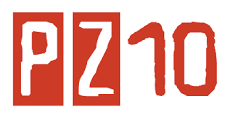Editing
Editing is the process of reviewing the data to ensure maximum accuracy and clarity. Editing should be conducted as the data is being collected. This applies to theediting of the collection forms used for pret
esting as well as those for the full-scaleproject. Careful editing earlyin the collection process will
often catch misunderstandings of instructions, errorsin recording, and other problems at a stage when it is still possible to eliminate them for the later stages of the study. Early editing has the additional advantage of permitting the questioning of in terviewers while the material is still relatively fresh in their minds.
Typically, interviewer and
respondent data are monitored to ensure that data
requirements are fulfilled. Each collection fo
rm should be edited to ensure that data
quality requirements are fulfilled. Regarding data obtained by an interviewer (and to an
extent self-report) the following should be specifically evaluated:
1.Legibility of entries
. Obviously the data must be legible in order to be used. Where not legible, although it may be possible to infer the response from other data collected, where any real doubt exists about the meaning of data it should not be used.
2.Completeness of entries
. On a fully structured collection form, the absence of an entryis ambiguous. It may mean either that the re
spondent could not or would not provide the answer, that the interviewer failed to ask the question, or th
at there was a failure to record collected data.
3.Consistency of entries
. Inconsistencies raise the question of which response is correct.(If a respondent family is indicated as bei
ng a nonwatcher of game shows, for example,and a later entry indicates that they watched
Wheel of Fortune twice during the past week, an obvious question arises as to which
is correct.) Discrepancies may be cleared up by questioning the interviewer or callbacks to
the respondent. When discrepancies can be resolved, discarding both entries is usually the wisest course of action.
4.Accuracy of entries
. An editor should keep an eye out for any indication of in accuracy in the data. Of particular importance is the detection of any repetitive response patterns in the reports of individual inte
rviews. Such patterns may well be indicative of systematic interviewer bias or interv
iewer/respondent dishonesty.
Coding
Coding is the process of assigning responses to data categories and numbers areassigned to identify them with the categories.
Coding is translating answers into numerical values or assigning numbers
to the various categories of a variable to be used in data analysis.
Coding is done by using a code book, code sheet, and a computer card.
Coding is done on the basis of the instructions given in the codebook.
The code book gives a numerical code for each variable.
Tabulation of data:
After editing, which ensures that the information on the schedule is accurate and categorized in a suitable form, the data are put together in some kinds of tables and may also undergo some other forms of statistical analysis.
Table can be prepared manually and/or by computers. For a small study of 100 to 200 persons, there may be little point in tabulating by computer since this necessitates putting the data on punched cards. But for a survey analysis involving a large number of respondents and requiring cross tabulation involving more than two variables, hand tabulation will be inappropriate and time consuming.
After editing, which ensures that the information on the schedule is accurate and categorized in a suitable form, the data are put together in some kinds of tables and may also undergo some other forms of statistical analysis.
Table can be prepared manually and/or by computers. For a small study of 100 to 200 persons, there may be little point in tabulating by computer since this necessitates putting the data on punched cards. But for a survey analysis involving a large number of respondents and requiring cross tabulation involving more than two variables, hand tabulation will be inappropriate and time consuming.


